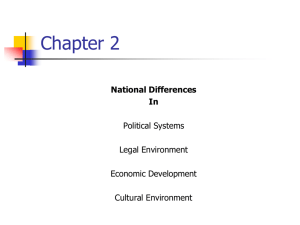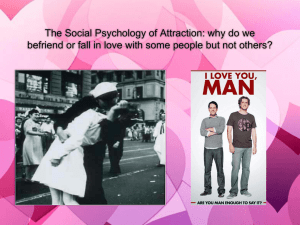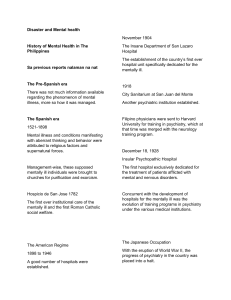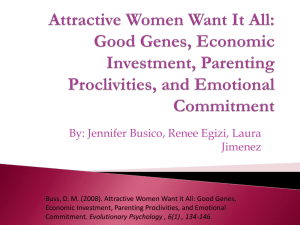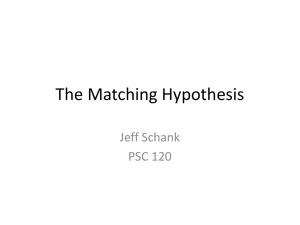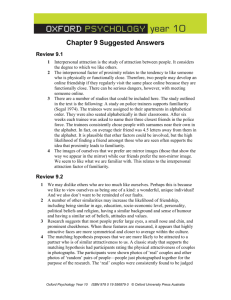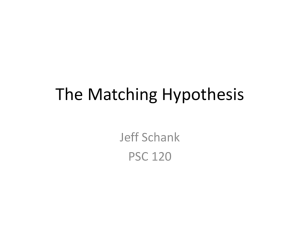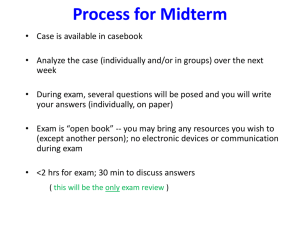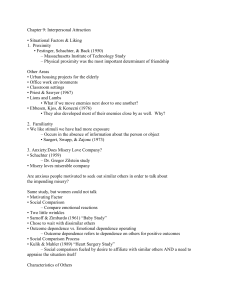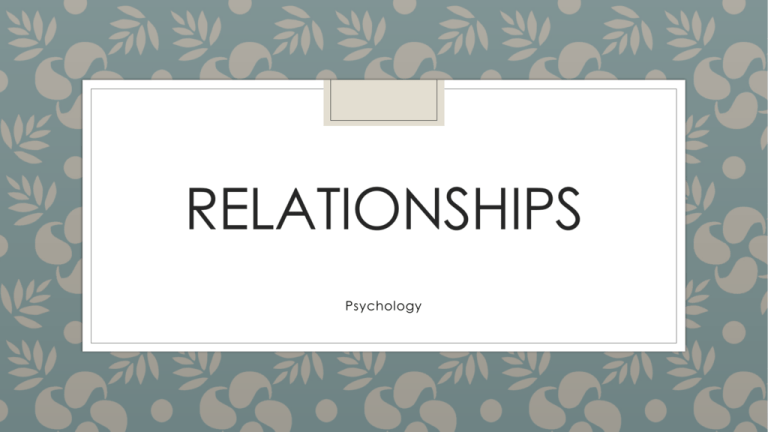
RELATIONSHIPS
Psychology
Activity
◦ Write your own ‘lonely hearts’ ads.
◦ As a group, analyse the results.
Why do this?
◦ This links in to theories of intersexual selection, and the
idea that men will advertise resources they think women
select (e.g. wealth and strength)and vice versa
(women will advertise nurturing qualities).
◦ Intra sexual selection: Selection within same sex. Males
fighting with other males to gain access to a female
Intersexual selection
◦ Selection between the two sections.
◦ Selection based on one sex preferring characteristics in the other sex
◦ E.G Peacocks
Types of relationships
◦ Friendship/Companionship
◦ Romantic
◦ Sexual
Continued
◦ We are a social species
◦ Most of our emotions are experienced through relationships
◦ Companionships: Prevents loneliness
◦ Procreation and child rearing
A relationship is
Any ongoing association between 2 or more
individuals’ (Reis, ’96)
◦ ‘
Formation of interpersonal
relationships
Basic idea
◦ We tend to have relationships with those we live close to
◦ Because we live close to someone we are also likely to have
more frequent interactions with those people – 2 factors linked
Evaluation
Festinger et al. (1950) found:
In multistory buildings, most friendships were formed
with people on the same floor
Zajonc (1968) circular argument
Do we like the person more because we spend time with them, or do
we spend time with them because we like the person
Warr (1965) Found:
Not all frequent interactions result in liking, sometimes it can produce
more disliking. Suggests: frequency & proximity do NOT lead to
greater liking just greater intensity of feelings
Physical Attractiveness
Basic idea
◦ Degree of physical attractiveness = one of the first things we notice
Research evidence
◦ General agreement on what is considered attractive
◦ Attractive people are perceived as having more positive characteristics (Brigham,
1971)
◦ Attractive people often DO have more positive characteristics (Langlois et al., 2000)
WHY?
Evaluation
There are cultural differences in preferences for female body sizes
(Anderson et al., 1992).
◦ Individuals also change their preferences, e.g., see others as
more attractive when they are sexually aroused (Stephan et al.,
1971).
The Similarity theory
Basic idea
◦ Alikes rather than opposites attract
◦ Values, attitudes & beliefs are common indicators of strong friendships & attractiveness
(Lea & Duck, 1982)
Rubin (1973) explains why:
◦ possibility of engaging in same activities
◦ social validation of our beliefs
◦ if we like ourselves, it should logically follow that we will like others who are similar
◦ facilitate communication
◦ we may presume that people who are similar to us will like us
Evaluation
◦ There is considerable evidence in favour of this theory
◦ Sprecher (1998) Found:
Similarity was especially important in same-sex friendships
Proximity, physical attractiveness, first impressions, and similarity have all been
shown to be implicated in friendship choice
◦ Kerckhoff & Davis (1962) Suggests:
Only applies in early stages of a friendship/relationship
Suggest in later stages of an established relationship
of needs is more important
Mate Selection
Basic idea
◦ We choose those who are similar in attitudes, attractiveness, and personality to mate
with.
◦ Winch (1958) = opposites attract & are happier
◦ Burgess and Wallin (1953) found no evidence for this
◦ Rosenbaum (1986) Found:
Dissimilarity of attitudes reduces liking BUT
no evidence to suggest the other way round
Evaluation
◦ Buss (1989) looked at evidence from the last 50 years to
confirm the similarity hypothesis in mate selection
Physical attractiveness – Matching
hypothesis (Ernest Goffman)
◦ Whether we think someone is attractive or not is often one of the
first things we think about when we meet someone
The Theory Suggests
◦ Physical attractiveness is very important
◦ We all want a partner who is considered ‘socially desirable’
◦ Qualities that most people look for:
◦
◦
◦
◦
Many women prefer a man who is taller than themselves
Good personality
Intelligence
‘Good looks’
◦ We also take into account our own social desirability & how likely we are to
get what we want in a partner
◦ We ‘socially match’ ourselves with a partner
Evaluation
Walster et al. (1966)—we choose a partner who is the same level of
attractiveness as we are (possibly to minimise the chance of
rejection)
Feingold (1988) found a high correlation between attractiveness of
partners—supporting the matching hypothesis.


